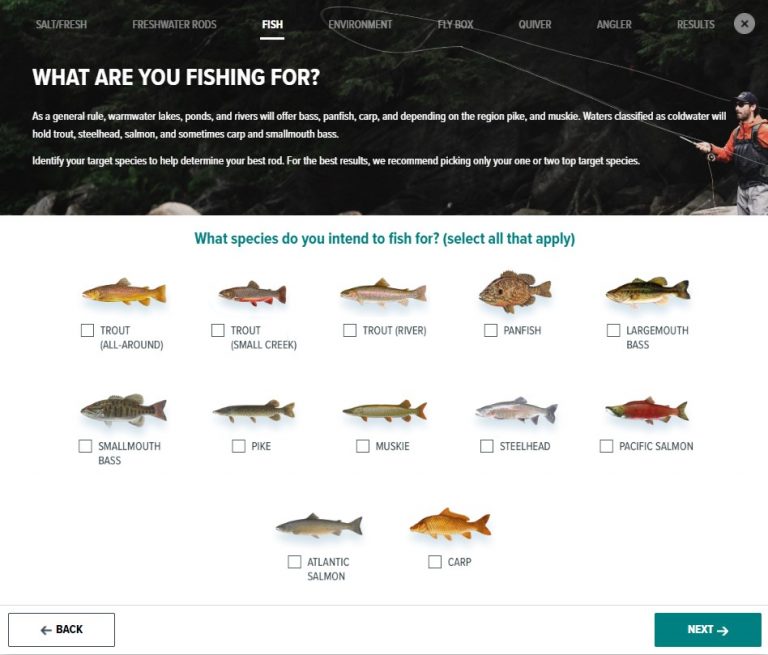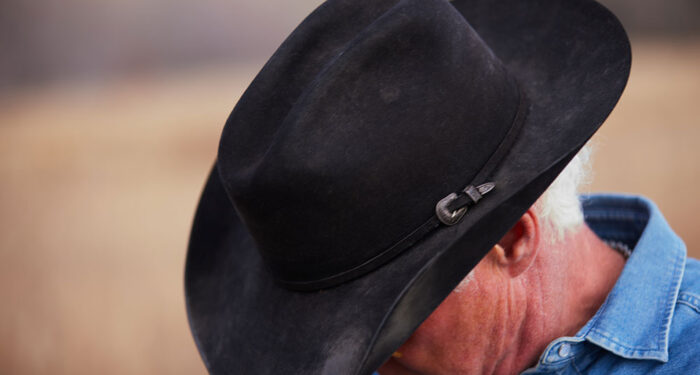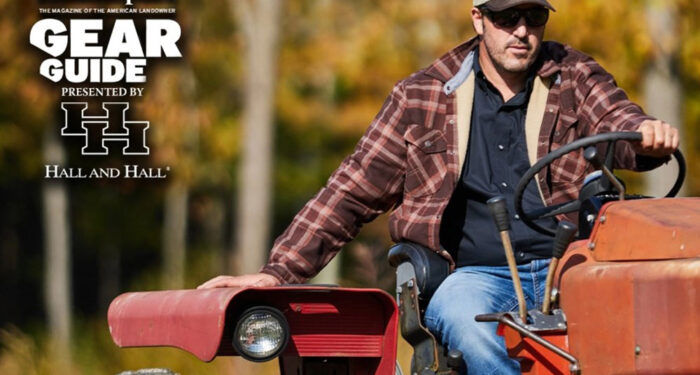Bass fly fishing is often overlooked by anglers who get distracted by all of the prevailing opportunities within the Northern and Southern Rockies. Fly fishing for bass is a natural progression for experienced bass fishermen looking for a new challenge, or for experienced fly fisherman who wish to tackle a new species. Fishing for freshwater bass (specifically smallouth and largemouth) can be one of the most intense and rewarding experiences on a fly rod. Here’s what you need to know to get started:
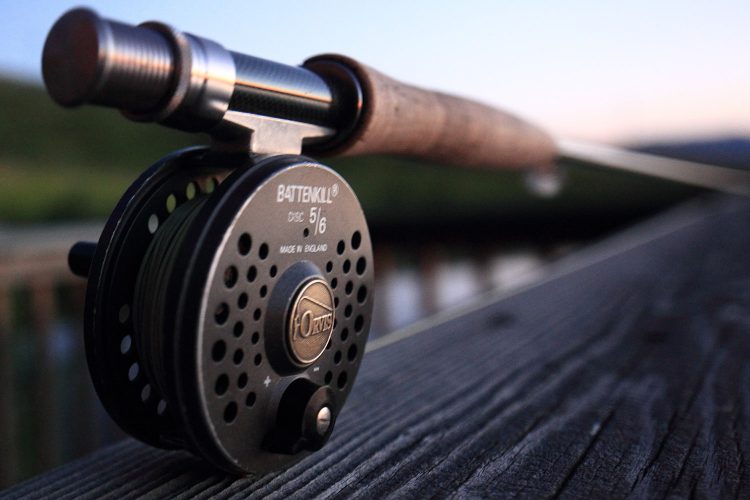
Equipment
Fly-tackle requirements are simple. Most bass guys use a 9-foot, 8-weight rod with a moderate action, which makes chucking poppers and surface bugs a bit easier. If you are in the market for a new fly fishing rod, Orvis has a quiz on their website to help you select the right fly rod for your fishing requirements. Don’t lose any sleep over the type of rod you use for bass fly fishing, just make sure it has enough backbone to handle a strong fish. Use fly line that will fit the rod, and a weight – forward line will cast large flies best. When it comes to leaders, it doesn’t necessarily matter what size leader you use, as bass generally don’t get spooked by line size.
Like many other elements of bass fishing, it’s not about the specific flies you choose to use, but instead about their presentation. Bass fish are opportunistic so you need something to catch their attention and invite them to strike. Flies that contain shiny, sparkly, and colorful elements are a great way to draw bass out of hiding, plus these flies will stand out better if the water is murky. Poppers are another effective way to lure bass, and they are an enjoyable method for anglers of all levels. Poppers are meant to mimic the effect of a topwater animal, usually a frog, and can become extremely lifelike when stripped with small rhythmic tugs of the rod while reeling in.
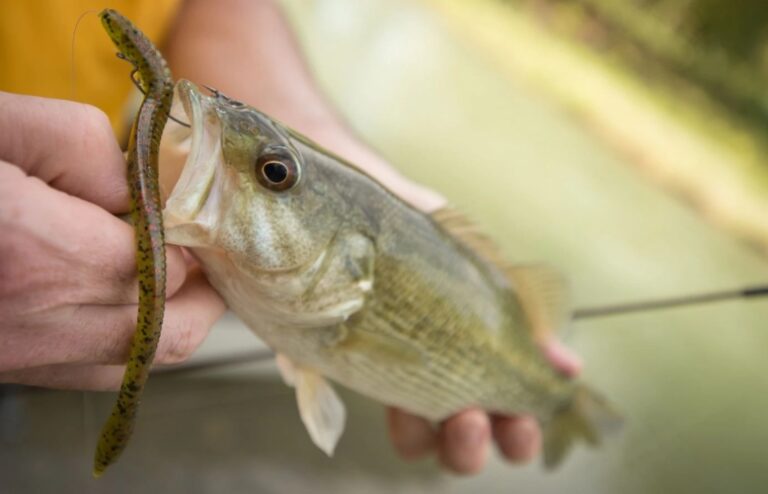
If a traditional fly isn’t working or you keep getting caught in weeds or vegetation, don’t be afraid to tie a traditional lure on. Throw a pack of soft plastic worms in your bag and switch things up if you stop getting bites.
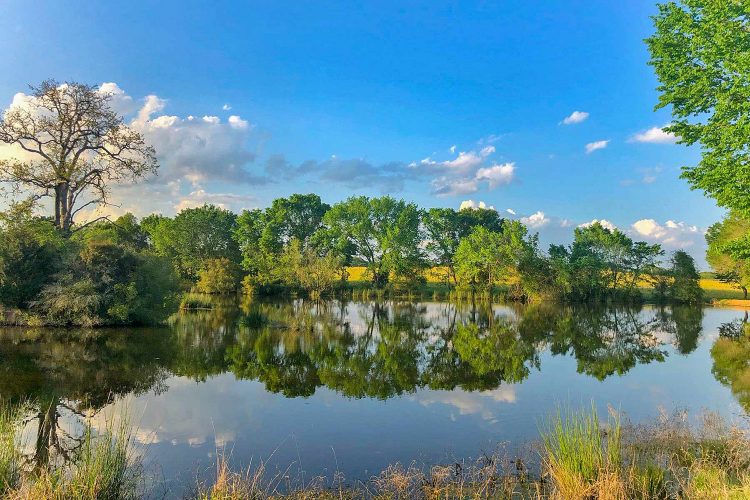
Technique
Since bass are warm-water fish, they have the ability to survive in many areas of the United States. Ideal ecosystems for bass fish will be areas like larger ponds and lakes since they provide sufficient food sources and plenty of room for the fish to move around. Your fishing technique will depend on the area you are fishing in, so you will need to learn how to read the water. Look for structure – bass like to hang around these areas to stay protected from predators and hidden from potential prey. Structure can include downed trees or logs, patches of weeds or lilly pads, or areas with drop-offs. By placing your fly around these areas of interest you are increasing your odds of landing a large hungry bass.
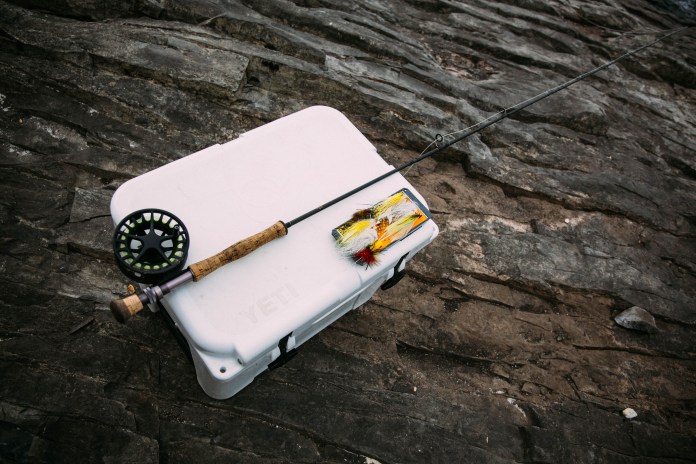
Presentation can take many forms, and you might need to try a combination of these until you find the version that works best for you.
- Stillness – cast to a likely spot, such as next to a stickup or tree in the water, and wait…
- Twitch/pause – cast, let sit for 3 – 5 seconds, twitch the fly and inch or so, then stop. Repeat.
- Strip and pause – cast well past the likely holding spot, let the fly sit or settle to depth, then strip 6 – 18” a few times. Pause, repeat, making the stripping pattern irregular to make the bass think the bait is in trouble.
- Rapid retrieve – cast past the target spot, then strip hard, irregular and fast
Other techniques to investigate include jigging the fly, bottom dragging, or trying a diving fly and sinking line. If you accidentally snag your fly on a piece of structure or vegetation, try pulling slowly and wiggling the line to loosen the hook. Jerking the line too hard might rip your fly off the line.
Because bass are opportunistic creatures, there isn’t necessarily a bad time to fish, but like most other freshwater fish they prefer to feed in the mornings and evenings. Fish activity has a negative correlation, so as temperature rises bass will swim in deeper, cooler waters. Mornings and evenings usually have a little cooler weather so fish are actively looking for food in shallower water, making them a little easier to target.
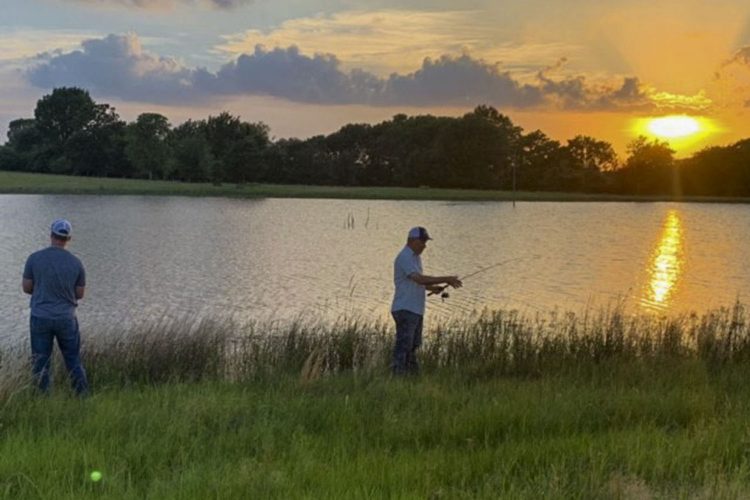
Whether you are an experienced fly fisherman looking for a new challenge or a novice to the fly fishing world, bass fly fishing is a fun activity that will have you planning your next outing once you hook that first monster. The most important part of fishing is to enjoy your time on the water. Happy fishing!

